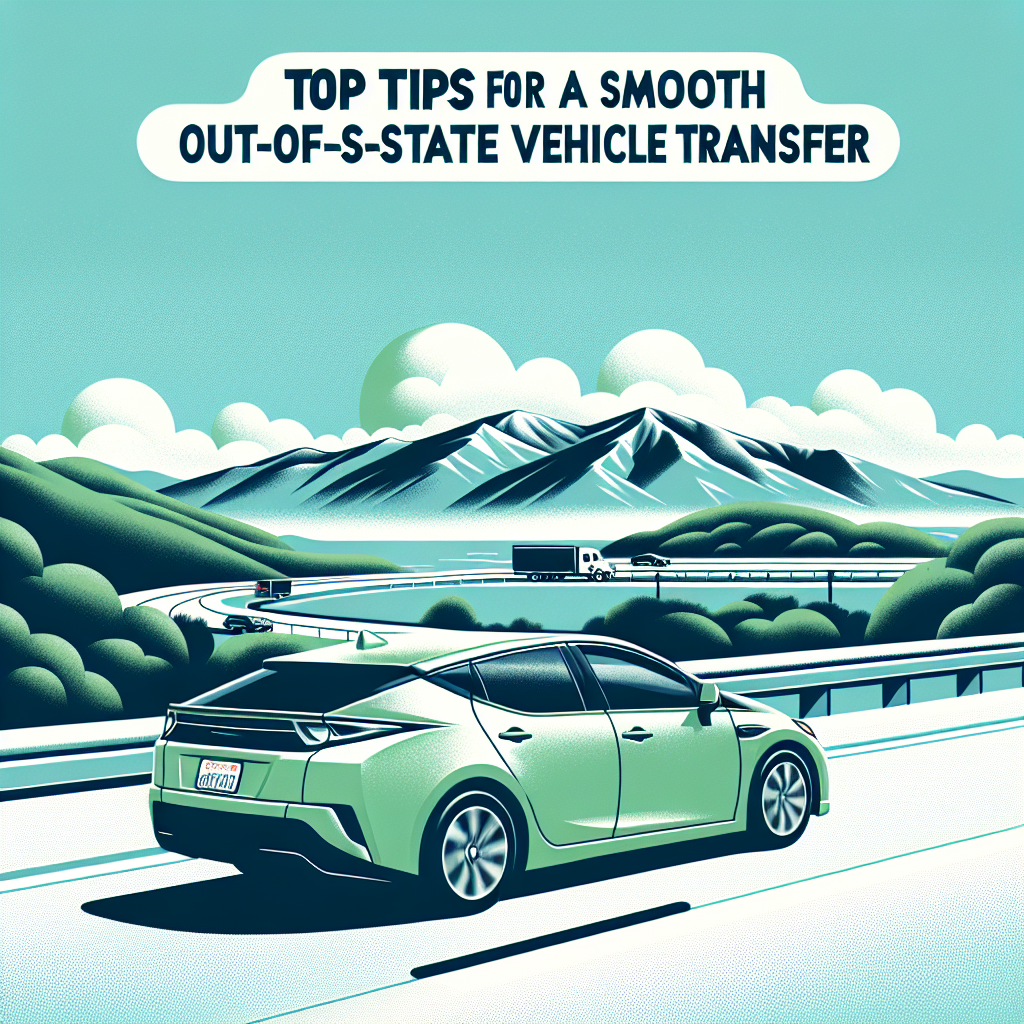Top 10 Tips for an Easy Out-of-State Vehicle Transfer to California
Introduction
Moving a car from one state to another can feel like a big task, and moving to California can be extra tricky. California is known for its strict rules about car emissions and other things you need to do at the DMV. Whether you’re moving to California or buying a car from another state, it’s important to know what to do. Here’s a guide to help you transfer your car smoothly and easily.
1. Learn California Vehicle Transfer Rules
Before you start, learn about California’s rules. They have strict emissions and safety rules that might be different from your old state. To avoid surprises:
- Check online or ask experts about emissions standards.
- Gather important papers like the car title, registration, and proof of insurance.
- Find out about any fees or taxes. California might charge more than other states.
2. Do a VIN Check
A VIN (Vehicle Identification Number) check is required in California for cars from other states. This makes sure your VIN is correct and the car isn’t stolen or changed.
- You can do this at the DMV, California Highway Patrol (CHP), or with a licensed verifier.
- Make an appointment early and make sure your car is clean and easy to inspect.
3. Pass a Smog Check
California’s Smog Check Program helps reduce air pollution. Meeting these rules is important for transferring your car.
- Make sure your car follows the rules by researching requirements.
- Pick a good smog check station, one that can do pre-tests to catch problems early.
4. Collect Important Papers
Having the right papers is key to a successful vehicle transfer:
- You need your out-of-state title, registration, and your smog certificate.
- Originals are better than copies.
- Make a checklist to ensure you have everything you need to avoid delays.
5. Learn the DMV Process
Knowing how the DMV works will help with timing and what to do:
- Make DMV appointments early to save time.
- Use online resources or services for scheduling and questions.
- Be patient and come prepared to speed up your visit.
6. Plan Your Budget
It’s important to know how much everything might cost:
- Think about costs like registration fees, sales tax, smog checks, and VIN verification.
- Save some extra money for unexpected costs.
- Use online tools to estimate fees and budget accordingly.
7. Check Car Modifications
Not all car changes are okay for California roads:
- Look up what modifications are allowed by contacting the DMV or checking regulations.
- Change or remove anything that doesn’t meet the rules.
- Seek more help if needed to get everything right.
8. Get Ready for Registration and Title
When you’re ready to finish the transfer:
- Be prepared to give up your out-of-state license plates.
- Learn how to get new California plates and a title.
- Make sure all the information on your papers is correct to avoid delays.
9. Plan When to Transfer
Choosing the best time can save you time and money:
- Try not to go to the DMV during busy hours.
- Keep track of deadlines to avoid penalties.
- Plan the transfer at a good time for you and according to the rules.
10. Think About Getting Professional Help
If you find the paperwork or waiting in line annoying, you can get help:
- Professional services can make the process faster and easier.
- Consider this if the transfer is complicated.
- Find a reliable service to help and have a smooth experience.
Conclusion
By following these tips, your car transfer to California can be easy and quick. Knowing the rules will help you avoid problems and make sure you follow all the laws. If it seems too hard, professional help is always an option. Ready to move your car? Let Tags Clinic make your California car transfer easy. Visit our website or contact us for stress-free DMV services!
Call to Action
We encourage you to visit the Tags Clinic at 3845 University Ave, San Diego, CA or call 619-777-9046. Our team of professionals is ready to help with all your vehicle transfer needs for a stress-free experience. To find out more, visit our website.


